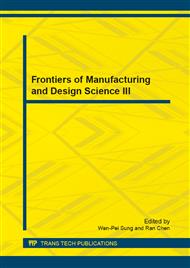p.1147
p.1155
p.1160
p.1164
p.1168
p.1173
p.1178
p.1183
p.1190
The Study on Optimal Matching of Light Truck Power Train
Abstract:
The multi condition driving cycle mode of light truck is established. A comprehensive evaluation system for the vehicle powertrain(VP) optimal matching with integration of dynamic performance, fuel economy and exhaust emission behavior by means of the weighting factors is established. The methods to determine the parameters and weighting factors are established. A simulation model is set for the VP using the software Advisor, and a VP optimization program is compiled by the Matlab optimization toolbox. The model is validated by experiment and used to optimize the power train of a certain type of light truck. The results show that the consideration of the dynamic performance, the fuel economy in the VP matching reduces the exhaust emissions effectively.
Info:
Periodical:
Pages:
1168-1172
Citation:
Online since:
December 2012
Authors:
Keywords:
Price:
Сopyright:
© 2013 Trans Tech Publications Ltd. All Rights Reserved
Share:
Citation:


